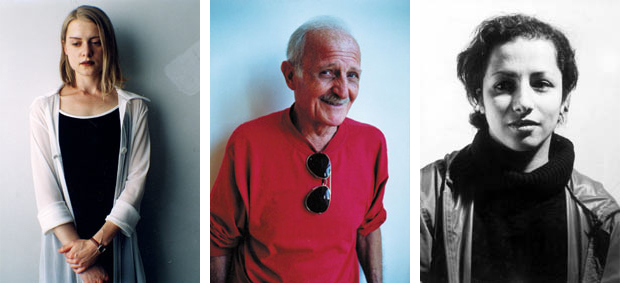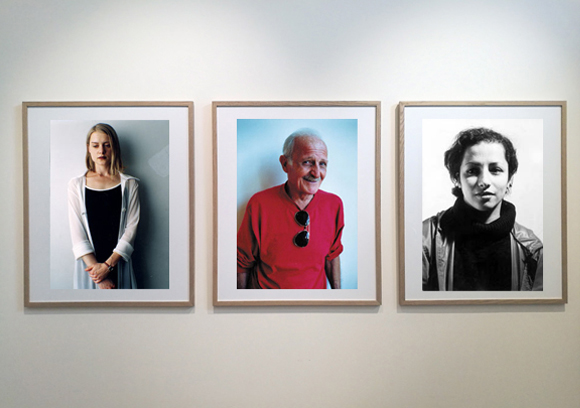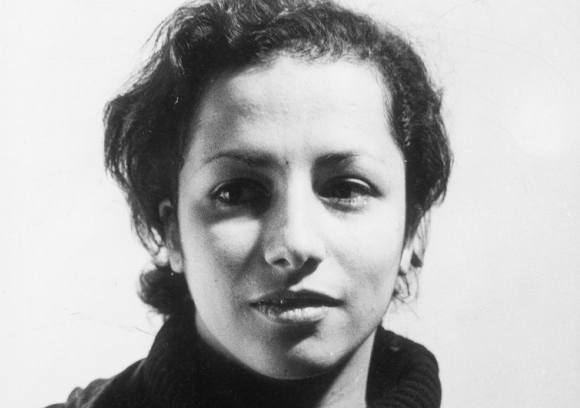| |
|
|
02.
| Witnesses |
| |


Serie started in 1996, photographs, silver print, various size.
Exhibition view from Rien à Voir, Fondation Actua, 1999, Casablanca.
Courtesy of the artist.
Ed. of 5 + 2 A.P.
'' The Witnesses series of photographs is like a trace that relays the artist’s sensitive experience with the person who “sees” and most importantly “has seen” what we, the viewers, cannot. ''
Studio Fatmi, June 2000

Witnesses
Exhibition view from Rien à Voir, Fondation Actua, 1999, Casablanca.
Courtesy of the artist.

Witnesses
Exhibition view from Rien à Voir, Fondation Actua, 1999, Casablanca.
Courtesy of the artist.
|
|
|
|
|
|
En 1998, Mounir Fatmi commence la série de portraits photographiques Témoins qui consiste à lier, sous la forme d’un contrat moral, le regardeur d’une œuvre à l’artiste. Leur relation se tisse à partir d’une question : « que fais tu dans la vie ? » réponse : « artiste ».
Au sein de cette rencontre le témoin devient le dépositaire d’une histoire singulière, celle de son rendez-vous fortuit avec l’artiste où celui-ci l’aura transformé en l’un des gardiens de sa mémoire. Cette mise en abîme raconte simultanément une double histoire, celle de l’œuvre initialement vue et celle du regardeur à son tour portraituré. S’établissent alors deux écarts au réel dont le premier renferme la vérité de l’œuvre initiale dans l’œil de celui qui pourra témoigner de son existence et le second qui transforme le complice de l’artiste en sujet d’une nouvelle proposition artistique.
La série de photographies Témoins a cette valeur de trace qui rend compte de l’expérience sensible de l’artiste avec celui qui « voit » et surtout qui « a vu » ce que nous, regardeurs, ne voyons pas. Dans cette approche ritualiste, mounir Fatmi se soumet au contexte et se laisse dicter sa conduite par son sujet qui, apparaît comme une entité souveraine, et dont la mémorisation de l’objet absent fait de lui un être omniscient.
Studio Fatmi, Juin 2000. |
|
In 1998, Mounir Fatmi started the series of photographic portraits Witnesses, which consists in binding through a moral contract the viewer of a work of art with the artist. Their relation is forged upon a question: “what do you do?” Answer: “I’m an artist.”
Through this encounter, the witnesses become the depositary of a singular story, that of their chance meeting with the artist, during which he will make them a custodian of his memories. This mise en abyme tells two stories simultaneously: that of the work initially viewed and that of the viewer whose portrait is taken as well. Two disparities from reality emerge from this: the first one contains the original work’s truth within the eye of whomever can testify to its existence, the second one turns the artist’s accomplice into the subject of yet another artistic proposition.
The Witnesses series of photographs is like a trace that relays the artist’s sensitive experience with the person who “sees” and most importantly “has seen” what we, the viewers, cannot. In this ritualistic approach, Mounir Fatmi submits to the context and lets his conduct be dictated by his subject who emerges as a sovereign entity and whose memorization of the absent object transforms into an omniscient being.
Studio Fatmi, June 2000. |
|
|
|